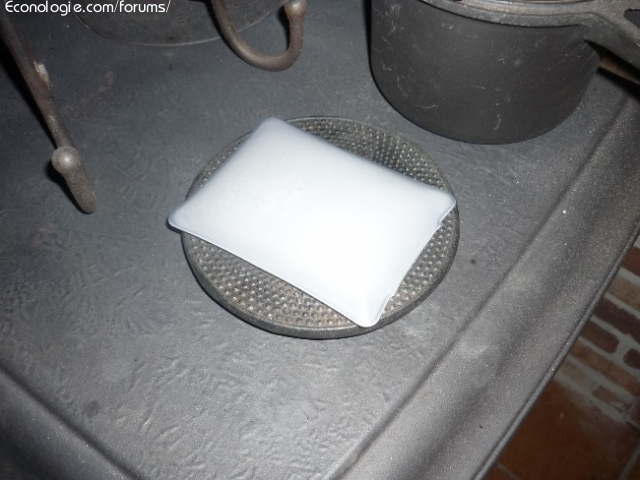Not solved because the volume needed is important and its price even higher than the energy density is high!
The limit is that of fuel or gas (or wood) to spend the winter, about 1500 2000 € per year for a typical house 70 years 90! The investment is therefore limited to 20000 to 40000 € on 10 to 20 years.
fuel, 3 tons, to synthesize with the sun, but irreversible reaction, CO2 and H2O in the end to give plants or algae on large surface giving back oil or wood !!
Calculate for different products really reversible as this acetate or a reversible chemical reaction in the cycle (very many in fact with water for example, NaSO4 for example, lime etc. ..) that use low energy reactions or hydration water, in fact, at low temperature less than 100 ° C, typically 100 times less energy than fuel oil, and therefore it takes 300m3 of the product, comparable to the volume of earth or water to be heated insulated by 1m of good insulation, even 3m of earth (in this case the price is minimum) !!
The more the reaction is energetic with a low volume, the higher the temperature will be high such as lime (900 ° C and cheap) which requires full sun with dish!
It is better to measure how cheap fuels are !!
In summary compact, the fuels have per molecule an energy of 1eV (11600 ° K) and the transitions of phases to T ordinary as with water, 100 to 300 ° K, to little 100 times lower, and therefore the volume needed is 100 times more, a very large pool 300m3.
http://en.wikipedia.org/wiki/Electronvolt
So, the problem is not in finding the product and the reaction (an armada), but in decreasing the volume necessary, by decreasing the losses of the house to the max by isolating it to the max, and recovering the solar energy from the winter to the max, (almost passive house), which is very difficult for a house old typical modern !!!
In my opinion, storing the heat of summer in the deep earth over a volume of several hundred m3 by drilling boreholes seems to me the simplest.
It would be necessary to design a robotic percussion drill that pulls a pipe into the earth in a small hole of a few cm, because then more drilling cost problem !!
http://fr.wikipedia.org/wiki/Sulfate_de_sodium
Glauber salt, the decahydrate form, was used in the past as a laxative. It has also been proposed to store heat in passive solar heating systems. This use takes advantage of its unusual solubility properties, as well as its high heat of crystallization (78.2 kJ / mol).
In 1995, sodium sulfate was sold around 70 $ per ton in the United States, making it a relatively cheap chemical compound.








